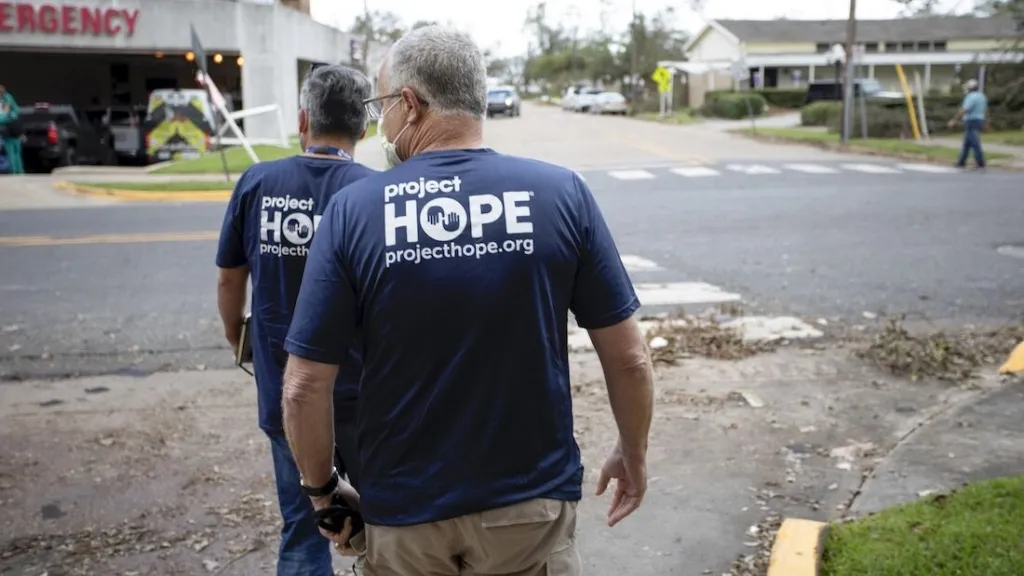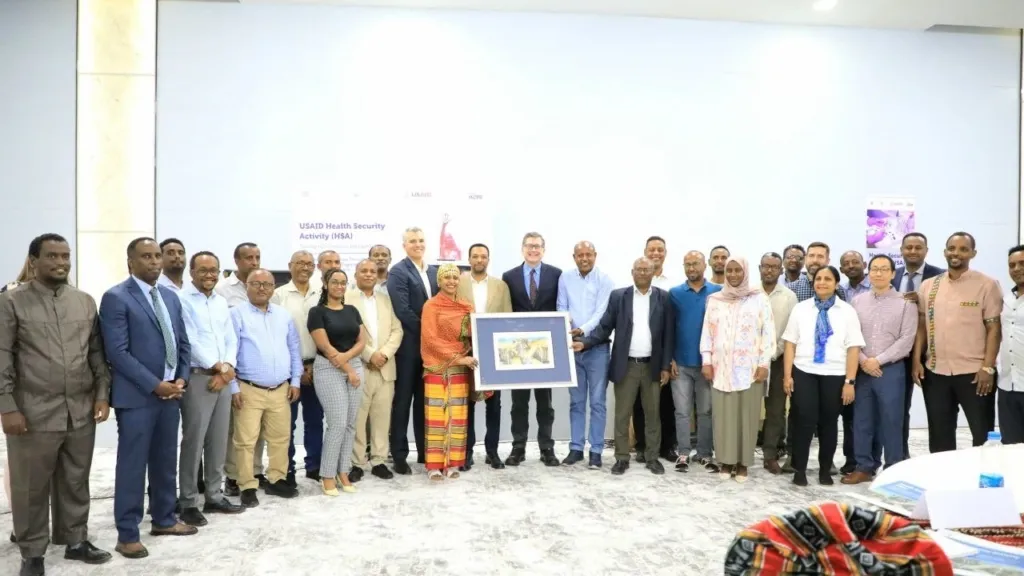Hurricane Laura Response: How Project HOPE is Helping
Project HOPE is on the ground supporting relief efforts in areas hit hard by Hurricane Laura. Learn more about our response and how you can help.

Project HOPE has concluded an active response on Hurricane Laura. To learn more about our active responses, please visit our Urgent Need page.
Project HOPE is on the ground to support local relief efforts in the wake of Hurricane Laura. Hundreds of thousands of people are without power and at least 14 people have been killed after the devastating Category 4 hurricane made landfall near Cameron, Lousiana on August 27.
What you need to know:
- Hurricane Laura made landfall on August 27 near Cameron, Louisiana with devastating 150 mile-per-hour winds.
- At least 14 people have been killed, and many of the hardest-hit areas are still being assessed.
- Hundreds of thousands of people are without power and water, and it could take weeks to get it back.
- Project HOPE is on the ground working with local community health systems to support relief efforts.
What’s the latest on Hurricane Laura?
Hurricane Laura made landfall near Cameron, Louisiana as a Category 4 hurricane with maximum sustained winds of 150 miles per hour — one of the strongest hurricanes to ever make landfall in the United States.
The storm pummeled southwestern Louisiana, killing at least 14 people and leaving widespread destruction in its wake. In Lake Charles and surrounding areas, there is severe damage to buildings and homes, significant debris clogging streets, and flooding. Louisiana governor John Bel Edwards has said that the damage is “extensive” and that wind damage appears to have been worse than storm surge, which the National Weather Service had warned could be as high as 20 feet.
What are the greatest needs expected to be?
Lake Charles, Louisiana has been hit particularly hard. Our team on the ground is reporting that all clinics in the city are closed, and water and power may be out for weeks. Hundreds of thousands of people across Louisiana have lost power, which can disrupt home health devices and cold chains that keep medicines safe. Additionally, health systems and hospitals may have suffered serious damage, limiting people’s ability to receive care.
At least 183 water systems in Louisiana are inoperable, meaning that as many as 200,000 people currently do not have access to clean water. Three hospitals have evacuated their patients due to power and water outages, which could take weeks to repair.
“It’s as bad as anything I’ve seen from a wind damage perspective,” says Project HOPE’s Harley Jones, who is leading Project HOPE’s response in Louisiana. “All the critical infrastructure is down — power, phone lines, and water.
“The lack of drinking water is a huge concern, especially with heat advisories being issued across Louisiana. The National Guard is handing out ice and water, and people are lined up for miles and miles.”
Based on our experience responding to storms like Hurricane Laura, we expect other needs to include shelter and access to necessities, particularly among vulnerable population groups. COVID-19 presents an additional challenge, with safety protocols like social distancing and wearing a mask much harder to follow.
What is Project HOPE doing to help?
Project HOPE’s Emergency Response Team is on the ground working with communities and community health systems in storm-affected areas, as well as in locations hosting displaced families.
In partnership with Business Roundtable and Healthcare Ready, Project HOPE is mobilizing a shipment of more than 100,o00 surgical masks that will be donated to the State of Louisiana to support their COVID-19 infection prevention efforts in the wake of the storm. We have also delivered 2,250 hygiene kits to families in Houston who are displaced by the storm.
Project HOPE’s Emergency Response Team and medical volunteers are working with safety net clinics to identify needs and ways to best support their response and recovery. Project HOPE will continue to work with local health authorities and partners to respond to needs of displaced populations while also supporting COVID-19 containment efforts in the aftermath of Hurricane Laura.
What is Project HOPE’s experience responding to major hurricanes?
Project HOPE has a long history of responding to natural disasters and has responded to several hurricanes in the United States and surrounding areas.
Project HOPE was one of the first organizations on the ground in Abaco following Hurricane Dorian in the Bahamas in 2019. In total, Project HOPE provided direct health services to over 1,500 storm survivors, delivered $3.1 million in medicines and supplies, distributed over 16,000 hygiene kits, and deployed 28 medical volunteers.
Is there a risk COVID-19 will spread after the storm?
With proper distancing and hygiene practices disrupted, we are extremely concerned we could soon see a spike in COVID-19 cases in storm-affected areas. Everyone in the affected areas — from survivors to first responders — must do what they can to help prevent the spread of COVID-19.
“Both responses will suffer,” says Tom Cotter, Project HOPE’s director of emergency response. “The response to the pandemic will suffer, and so will the response to the disaster.”
How does this storm compare to previous hurricanes?
Hurricanes cause damage in three main ways: wind damage, rainfall, and storm surge. While Hurricane Harvey was a Category 4 storm when it made landfall in 2017, its most devastating impact was the rain and flooding that followed its arrival, rather than its 130-mile-per-hour winds. Hurricane Katrina — the most devastating storm to ever hit the U.S. — was a Category 3 hurricane when it made landfall in 2005. Hurricane Dorian was a devastating Category 5 hurricane when it hit Great Abaco Island in 2019, with its damage primarily coming from its 185-mile-per-hour winds.
Hurricane Laura’s sustained winds at landfall were 150 miles per hour — just seven miles per hour shy of Category 5 strength, and enough to cause “substantial” damage to structures that can make them unlivable for weeks or months. One difference between Laura and Dorian, however, is that Laura appears to have moved much faster: 15 miles per hour, rather than Dorian’s punishing 1-mile-per-hour crawl, which prolonged the damage in the Bahamas.



